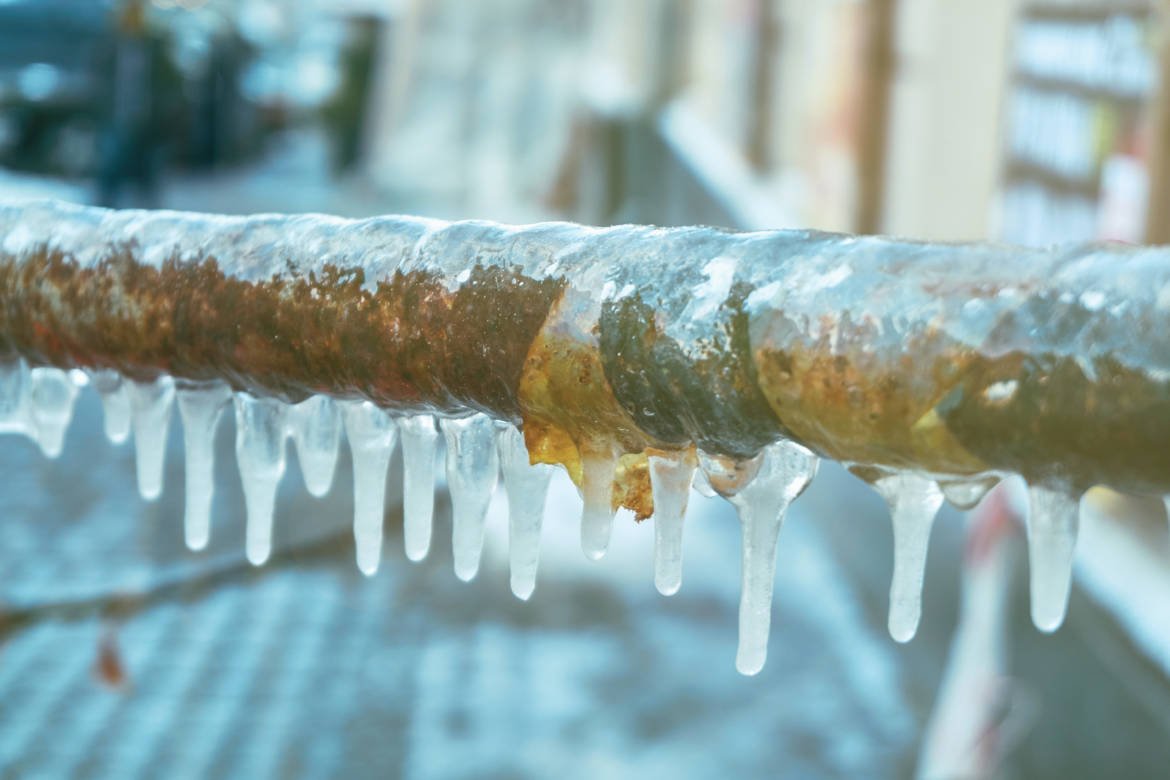Avoiding Frozen Plumbing in Cold Weather: Essential Advice
Avoiding Frozen Plumbing in Cold Weather: Essential Advice
Blog Article
The content which follows pertaining to Helpful Tips to Prevent Frozen Pipes this Winter is fairly motivating. You should investigate for yourself.

Winter can wreak havoc on your plumbing, especially by freezing pipes. Here's just how to prevent it from occurring and what to do if it does.
Introduction
As temperature levels decrease, the threat of icy pipelines boosts, possibly leading to expensive fixings and water damage. Comprehending just how to avoid icy pipes is crucial for homeowners in chilly climates.
Prevention Tips
Protecting vulnerable pipes
Wrap pipes in insulation sleeves or utilize warm tape to secure them from freezing temperature levels. Concentrate on pipelines in unheated or exterior locations of the home.
Home heating methods
Keep interior spaces appropriately warmed, specifically locations with pipes. Open up cupboard doors to allow cozy air to circulate around pipes under sinks.
Exactly how to identify icy pipelines
Try to find decreased water circulation from faucets, unusual odors or sounds from pipelines, and noticeable frost on exposed pipelines.
Long-Term Solutions
Architectural adjustments
Take into consideration rerouting pipelines far from outside walls or unheated locations. Include added insulation to attics, basements, and crawl spaces.
Updating insulation
Buy high-quality insulation for pipelines, attic rooms, and wall surfaces. Appropriate insulation aids preserve regular temperatures and lowers the risk of frozen pipelines.
Securing Outdoor Pipes
Garden hoses and exterior taps
Disconnect and drain pipes garden pipes before winter months. Mount frost-proof faucets or cover outside taps with protected caps.
Understanding Icy Pipelines
What triggers pipelines to freeze?
Pipelines freeze when revealed to temperature levels below 32 ° F (0 ° C) for expanded durations. As water inside the pipelines ices up, it increases, putting pressure on the pipe wall surfaces and potentially causing them to break.
Threats and problems
Frozen pipes can lead to water supply disturbances, building damage, and costly repairs. Burst pipelines can flooding homes and create substantial structural damages.
Indicators of Frozen Pipes
Recognizing icy pipes early can avoid them from breaking.
What to Do If Your Pipelines Freeze
Immediate activities to take
If you suspect frozen pipes, keep faucets open to ease stress as the ice thaws. Utilize a hairdryer or towels soaked in warm water to thaw pipelines gradually.
Verdict
Stopping frozen pipelines calls for positive steps and fast actions. By understanding the reasons, signs, and safety nets, property owners can protect their plumbing throughout cold weather.
5 Ways to Prevent Frozen Pipes
Drain Outdoor Faucets and Disconnect Hoses
First, close the shut-off valve that controls the flow of water in the pipe to your outdoor faucet. Then, head outside to disconnect and drain your hose and open the outdoor faucet to allow the water to completely drain out of the line. Turn off the faucet when done. Finally, head back to the shut-off valve and drain the remaining water inside the pipe into a bucket or container. Additionally, if you have a home irrigation system, you should consider hiring an expert to clear the system of water each year.
Insulate Pipes
One of the best and most cost-effective methods for preventing frozen water pipes is to wrap your pipes with insulation. This is especially important for areas in your home that aren’t exposed to heat, such as an attic. We suggest using foam sleeves, which can typically be found at your local hardware store.
Keep Heat Running at 65
Your pipes are located inside your walls, and the temperature there is much colder than the rest of the house. To prevent your pipes from freezing, The Insurance Information Institute suggests that you keep your home heated to at least 65 degrees, even when traveling. You may want to invest in smart devices that can keep an eye on the temperature in your home while you’re away.
Leave Water Dripping
Moving water — even a small trickle — can prevent ice from forming inside your pipes. When freezing temps are imminent, start a drip of water from all faucets that serve exposed pipes. Leaving a few faucets running will also help relieve pressure inside the pipes and help prevent a rupture if the water inside freezes.
Open Cupboard Doors
Warm your kitchen and bathroom pipes by opening cupboards and vanities. You should also leave your interior doors ajar to help warm air circulate evenly throughout your home.

We had been shown that report about How to Prevent Your Pipes From Freezing from a buddy on another web address. Do you know about somebody who is involved in How to prepare your home plumbing for winter weather? Be sure share it. Many thanks for being here. Kindly stop by our website back soon.
Click Here Report this page